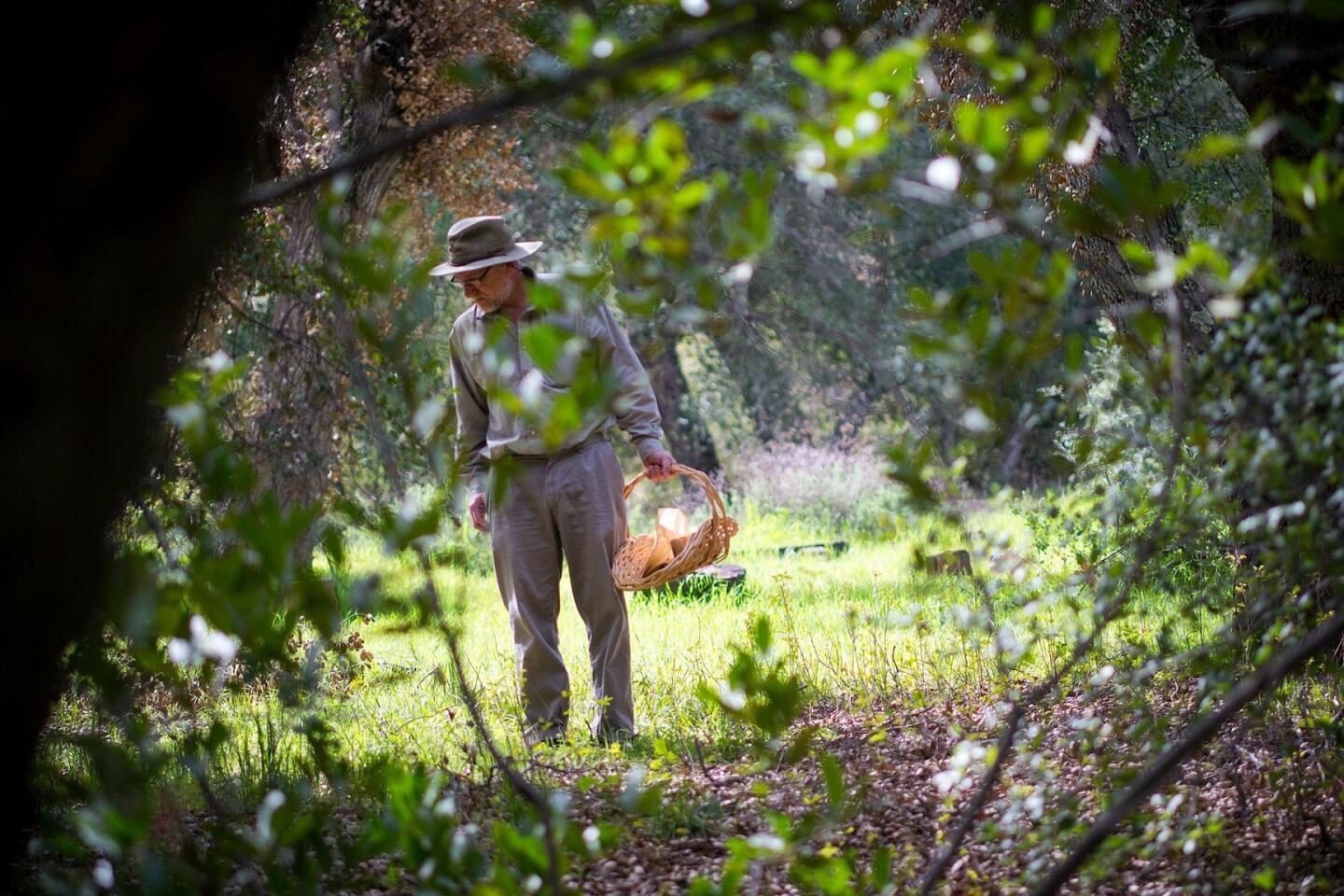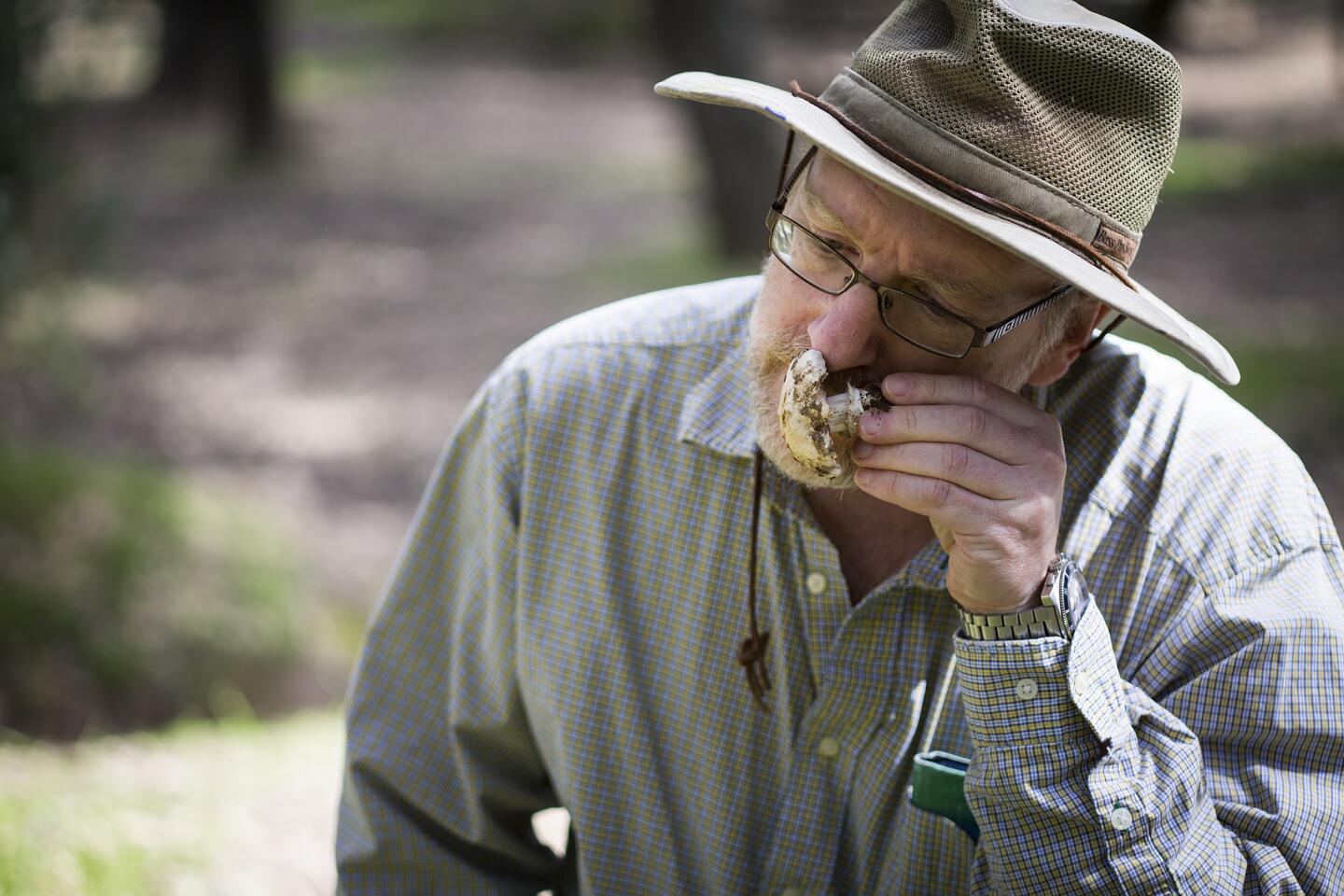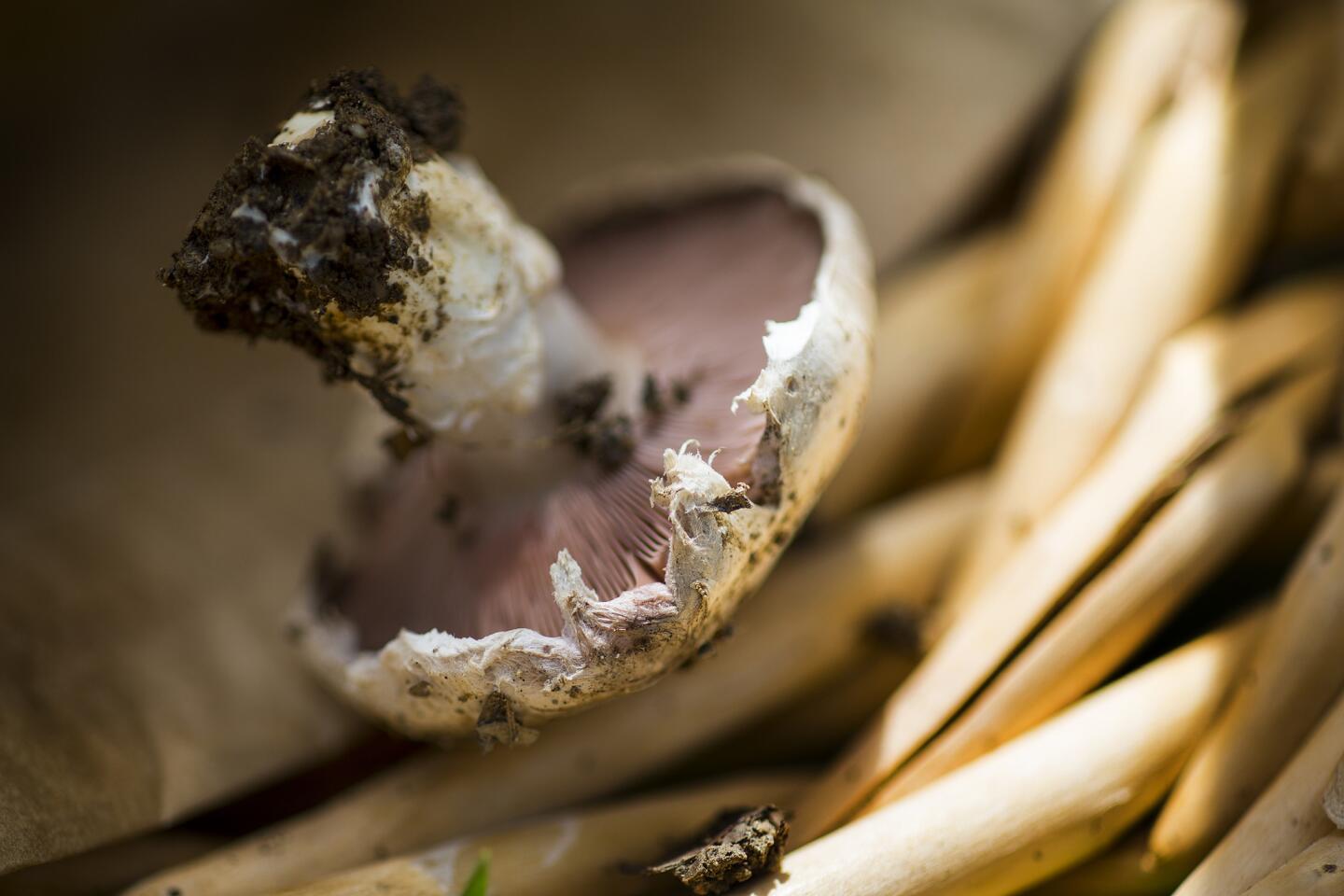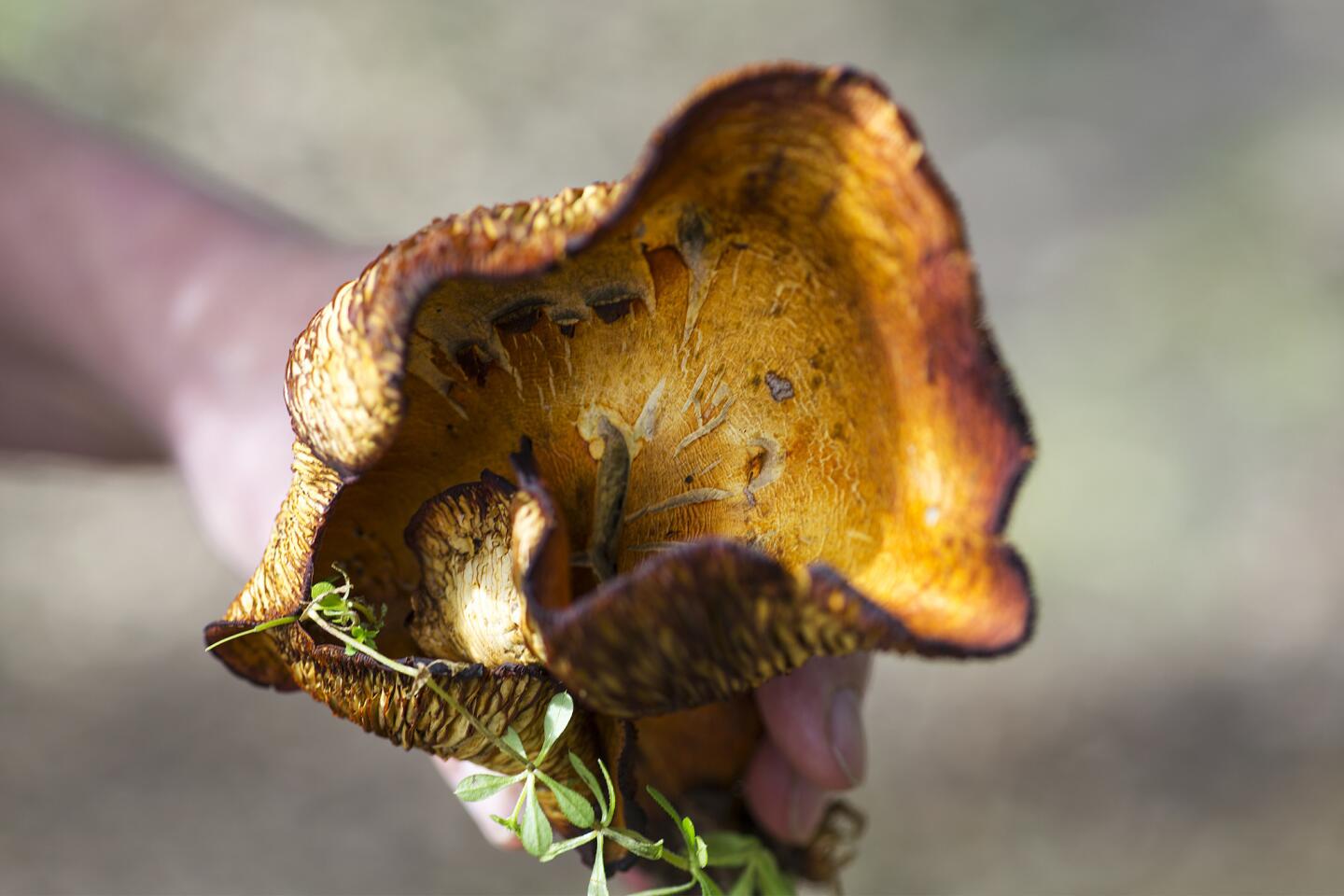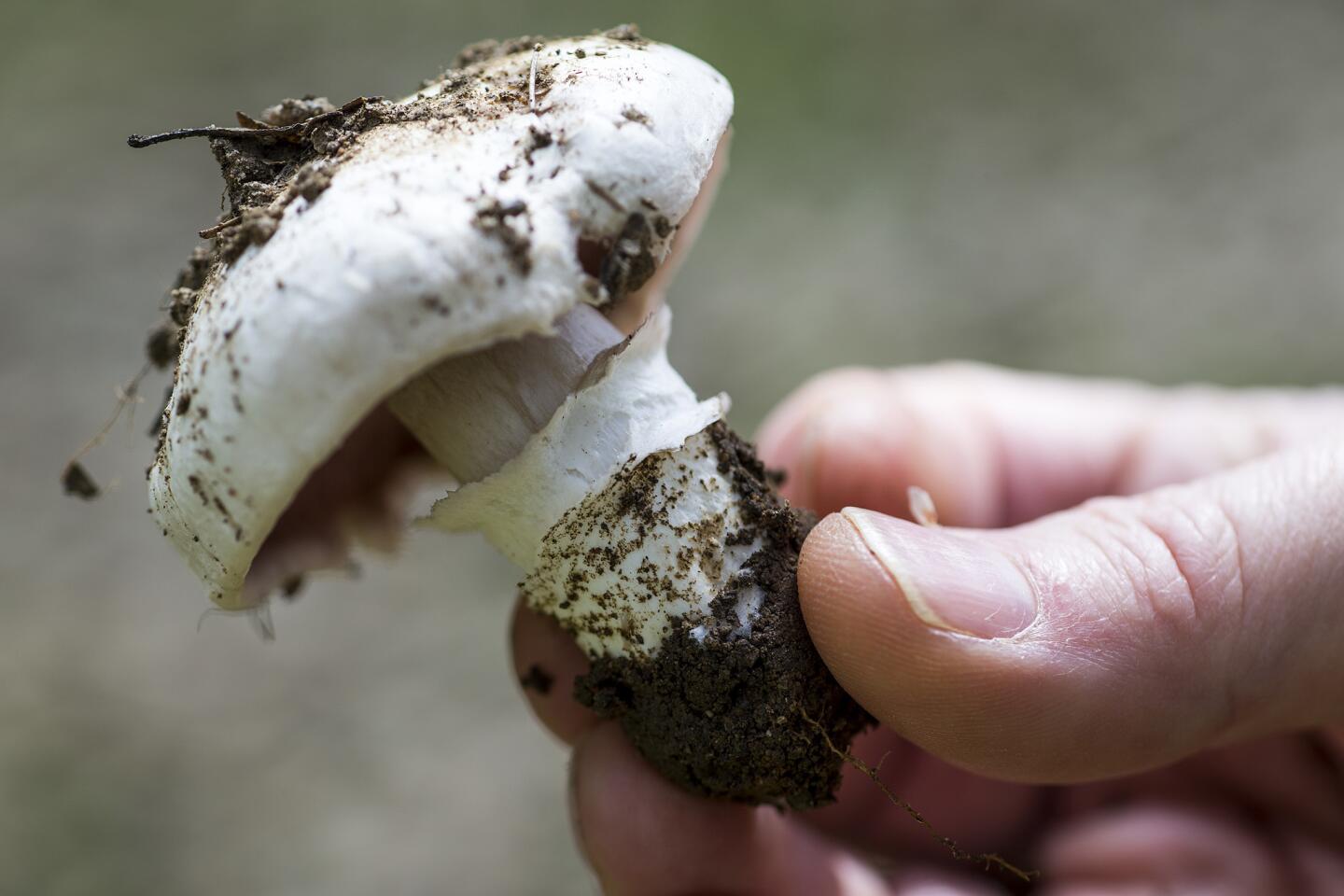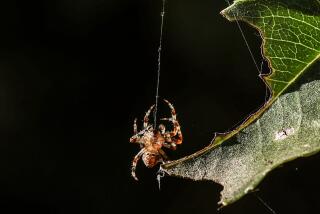Exploring the magic and mystery of mushrooms with the L.A. Mycological Society
There was a dump truck driver from Baldwin Park, a humanities professor from Long Beach, a conceptual artist from Altadena and a stay-at-home dad from Mid-City.
They didnât have much in common, except for one thing: Theyâd all fallen for fungus. Hard.
Their shared obsession led them to the Los Angeles Mycological Society, a nonprofit organization dedicated to fostering an appreciation and deeper knowledge of mushrooms â a strange and frequently misunderstood life-form.
A few times a year, usually just after a rain, the society leads a foray for its mushroom-loving members. These occasional mushroom hunts are part reunion, part scavenger hunt and part nature hike. They also offer the opportunity for the fungi-obsessed to talk mushroom books, mushroom recipes and favorite mushrooming spots.
No more than 25 people can attend, and it almost always fills up.
Mushrooms donât yield themselves to your desires. Iâm grateful every time I see one.
— Stephanie Fousek, humanities professor and mushroom hunter
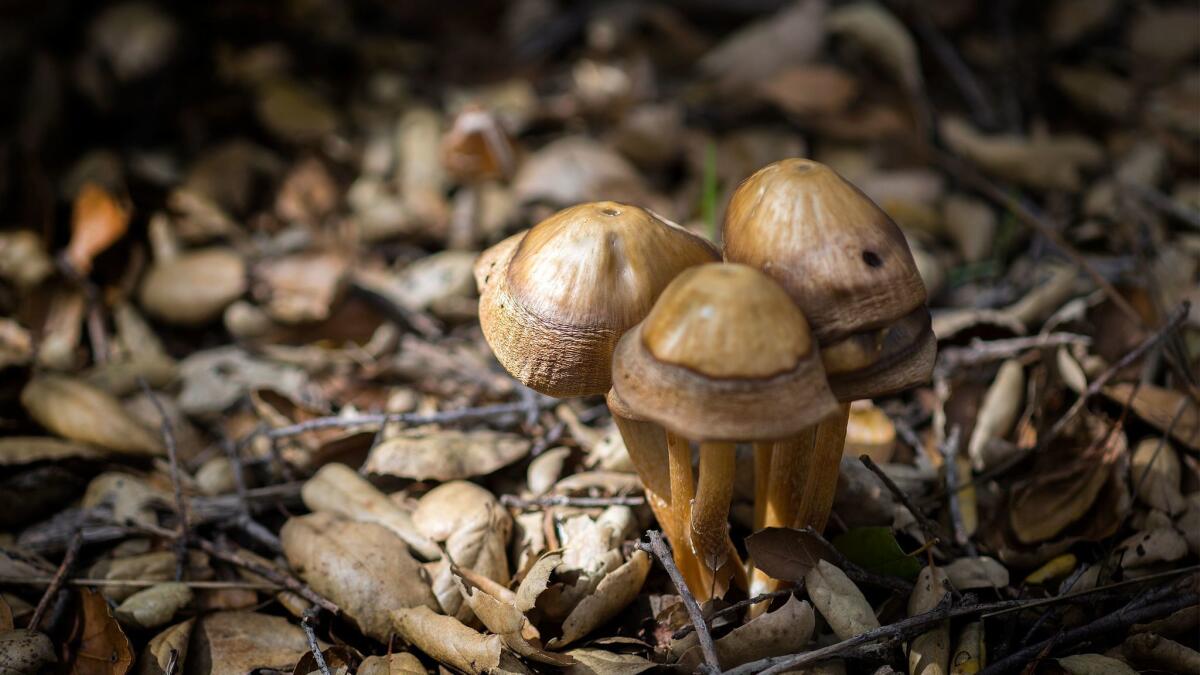
The most recent foray was in the mountains of the Cleveland National Forest, above Lake Elsinore. Many of the attendees had traveled more than an hour and a half to be there.
They arrived armed with wicker collecting baskets lined with wax paper, the better to let their bounty breathe. (A mushroom confined to a plastic bag grows slimy and spoils quickly). Some enthusiasts wore cotton gloves, just in case they found a mushroom hiding in a clump of poison oak.
There were also a few copies of the seminal mushroom-hunting guide, âAll That the Rain Promises and More.â The cover image of a grinning, tuxedo-clad man carrying a tenor horn and a massive mushroom would inspire anyone to keep their eyes peeled for fungi.
(Speaking of instruments, did you know the experimental musician John Cage was so into mushrooms that he co-wrote a book on the subject? His extensive mycology collection is housed at UC Santa Cruz.
âItâs useless to pretend to know mushrooms,ââ he once said. ââThey escape your erudition.â)
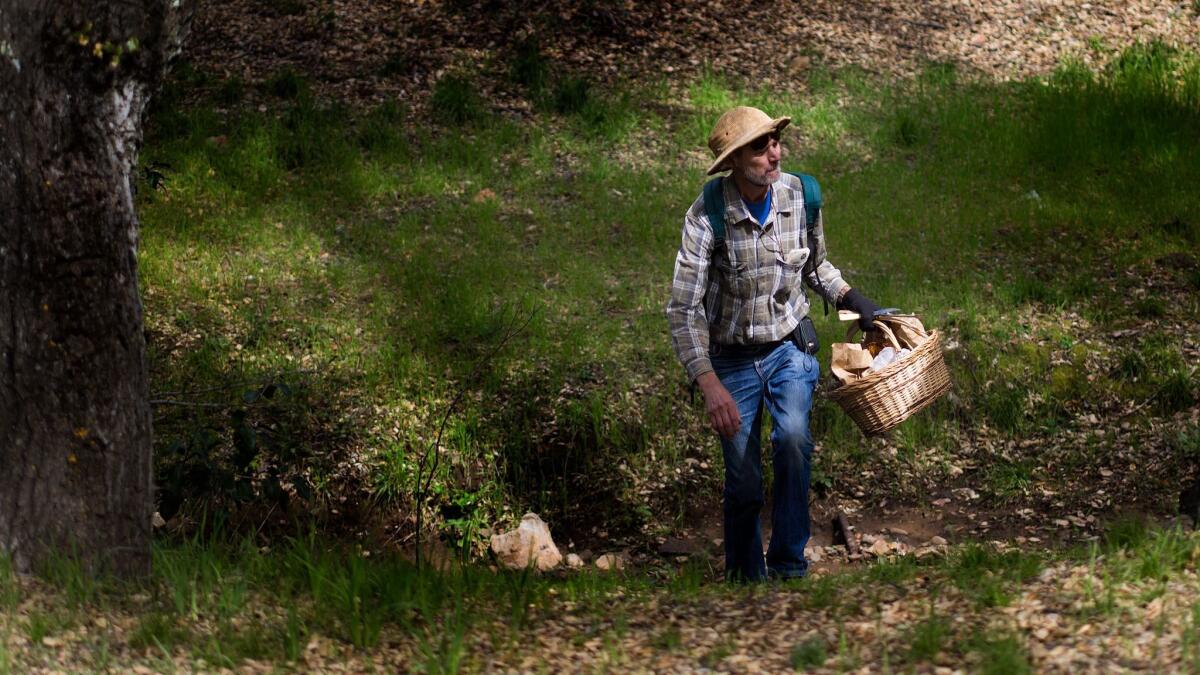
Steve Pencall, a retired research technician who organized the Saturday morning foray, said that even after 35 years of mushroom-hunting, he keeps his expectations low.
âI always say, âI donât expect to find any mushrooms. Iâm just out for a walk in the woods,ââ he said.
Stephanie Fousek, the humanities professor, said hunting mushrooms keeps her grounded.
âIt reminds me that you have to be in a space of openness and gratitude,â she said. âMushrooms donât yield themselves to your desires. Iâm grateful every time I see one.â
Larry Squyres, the dump truck driver, put it this way: âItâs like the ultimate Easter egg hunt.â
In general, Southern Californiaâs warm, dry climate does not make for ideal mushroom territory. But every once in a while, we get lucky.
Last spring was an amazing year for morels, despite the disappointing El NiĂąo, mushroom experts say. No one is quite sure why.
And after the rains in early 2017, a colorful menagerie of fungus emerged even in highly trafficked areas like Griffith Park and Topanga State Park. (Mushroom foraging is not allowed in either place â photos only!)
In Lake Elsinore, members of the mycology group fanned out across a shady campground. Their eyes were glued to the ground as they prodded the leaf litter with sticks.
As she scanned the forest floor, Cordelia Martinez reminisced about mushroom hunting trips up north.
âWhen you travel somewhere with dark wet canyons, it feels like there are mushrooms growing on the walls,â said Martinez, an Irvine resident who was there with her son Samuel. âHere, we really have to work for it.â
The two have had success in Southern California. She pulled out her smartphone to show off pictures of Samuel holding a basket laden with morels â some of the most prized fungi for eating â that they collected last year.
Why did the mushrooms come up then?
âBecause they felt like it,â Samuel said.
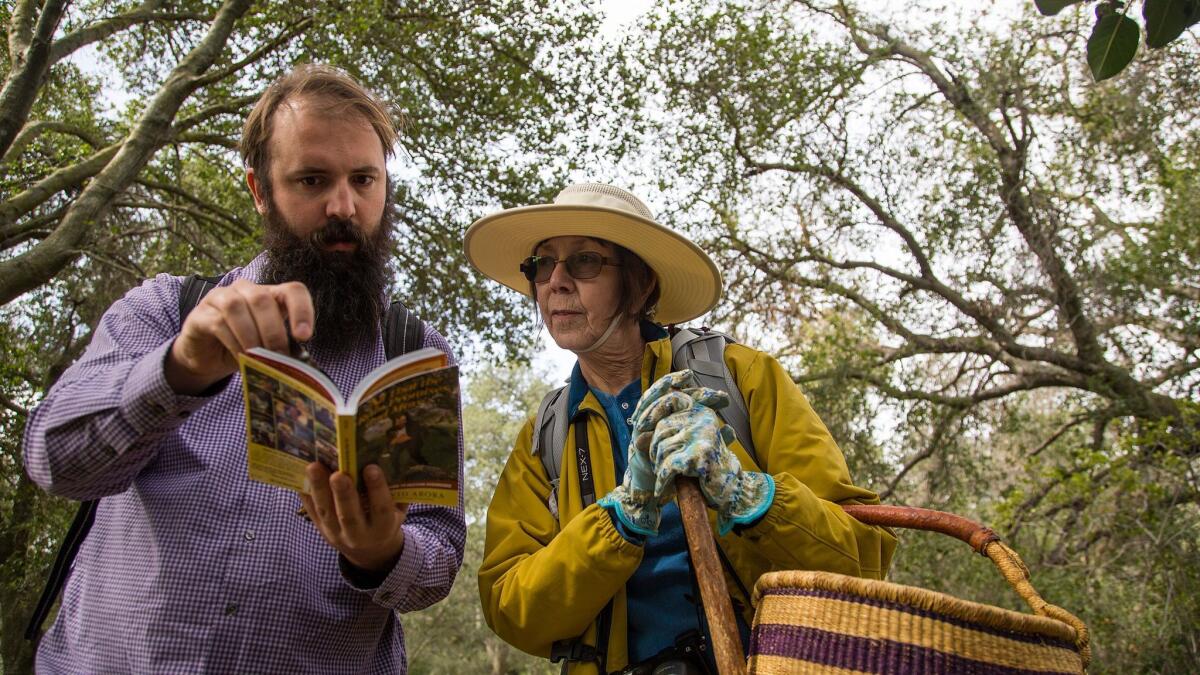
Mushrooms are inherently mysterious. They are the visible part of a large underground fungal network that is hard at work beneath our feet.
This hidden part of the fungus is called the mycelium, and it consists of what looks like a root system made of thin wispy hairs â kind of like what you might see growing on an apple as it rots.
Mycelium produce mushrooms only when they can spare the energy and when there is enough water to ensure the spore-producing âfruitsâ wonât dry up immediately.
âIn literature, people talk about invisible voices, or the stories that arenât being told,â Fousek said. âTo me, thatâs how mycelium are because they are below the soil.â
She noted that one of the largest organisms in the world is thought to be a network of honey fungus that stretches for 2.4 miles across the Blue Mountains in Oregon but remains hidden in the Earth. It produces clumps of light brown mushrooms that grow on stumps and tree trunks.
It turns out there are many reasons to love fungi, and fungus lovers will be happy to explain them to you.
âThereâs an otherworldliness to them,â said David Bermudes, a microbiologist at Cal State Northridge who leads a monthly mushroom class for mycological society members at the Natural History Museum of Los Angeles County. âPlants and animals seem so familiar â we see them all the time. But we donât spend 365 days a year with mushrooms. Thereâs an unfamiliarity there thatâs intriguing.â
Florence Nishida, a mycologist at the museum who co-teaches the class, said mushrooms are also unpredictable, which adds to their mystique.
âThey have this mysterious quality of just popping up,â she said. âIf you are interested in a plant you can always go back and watch as it develops flowers and seeds. But the mushroom is ephemeral â you happen to be there when it comes up out of the ground or you donât.â
Nishida said her infatuation with fungus also stems in part from the role it plays as natureâs most effective decomposer â breaking down dead trees, leaves and animals and restoring their nutrients to the environment.
âBacteria does a certain amount of it but fungi are the heavy lifters,â she said. âWithout them we would just be buried in this massive load of dead things.â
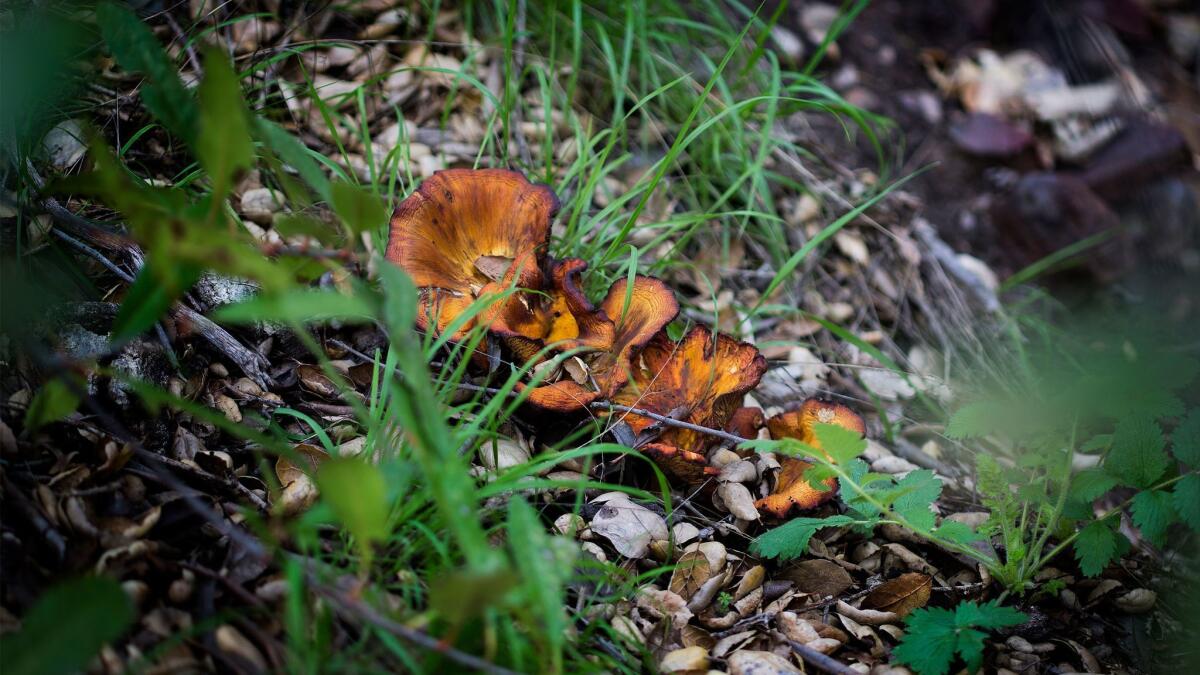
And then thereâs their inherent inscrutability. Some are considered delicacies while others are poisonous. Some change color when you touch them or send out their spores in what looks like a puff of smoke. Still others glow in the dark or make you hallucinate.
And yet, they often go unnoticed.
âYou really only find them when you pause â otherwise you would just pass them right by,â Bermudes said. âItâs the people who learn to pause that become intrigued by fungi.â
After about 90 minutes of mushroom hunting, Pencall blew a whistle to alert the group it was time for lunch.
Over sandwiches and a few freshly picked wild-green salads, the group identified the mushrooms theyâd found â amber phosphorescent jack-o-lanterns the size of a fist, clumps of lumpy black elfin saddles that almost look like they are melting, and light brown candy caps that smell like caramel if you lean in close.
There were a few cup fungi, which are not proper mushrooms, and bright orange witchesâ butter, a jelly fungus that grows on trees. Some members had gathered a handful of small specimens that the group dismissively referred to as LBMs (little brown mushrooms).
At a second location just a few minutes away, the group found dozens more black elfin saddles in a parking area. With mushrooms you never know what you will find and where, so itâs always worth looking, no matter where you are.
Pencall recalled magical times when heâs walked through a forest and seen hundreds or maybe thousands of âmushrumpsâ â mounds concealing a growing mushroom.
âThe sudden appearance of so many mushrooms is a reminder that some things cannot be explained,â he said. âNor perhaps, should they be.â
Do you love science? I do! Follow me @DeborahNetburn and âlikeâ Los Angeles Times Science & Health on Facebook.
MORE IN SCIENCE
Ancient relative of crabs, shrimps and lobsters is named in honor of David Attenborough
As the planet gets hotter, some mammals may get smaller
How the Great Barrier Reef is responding to global warming. (Hint: not well)
